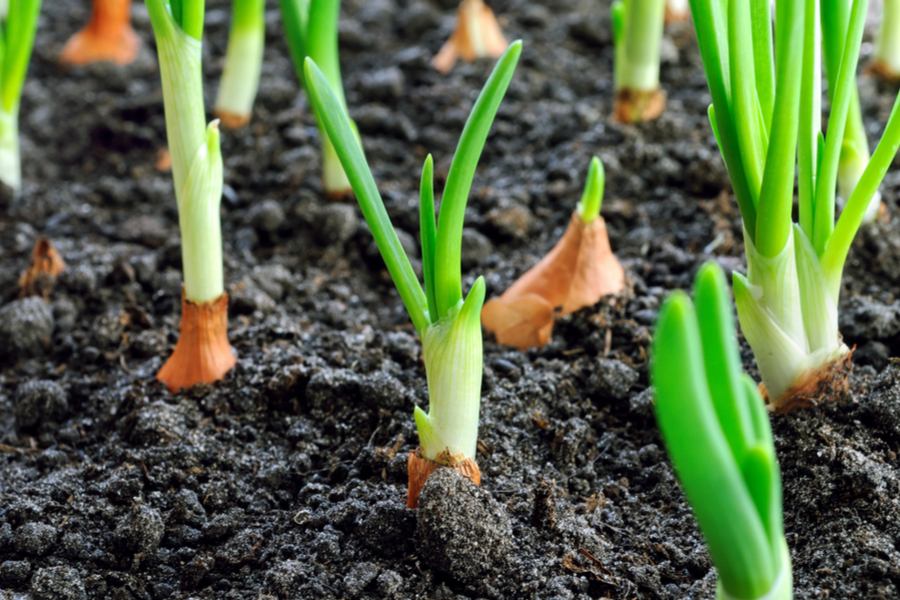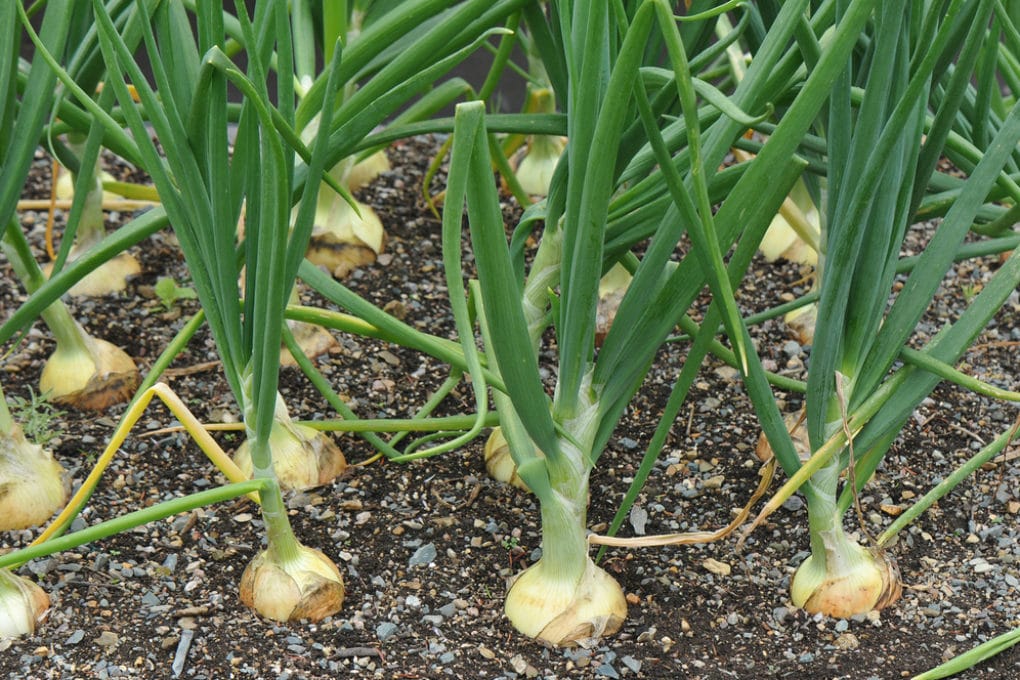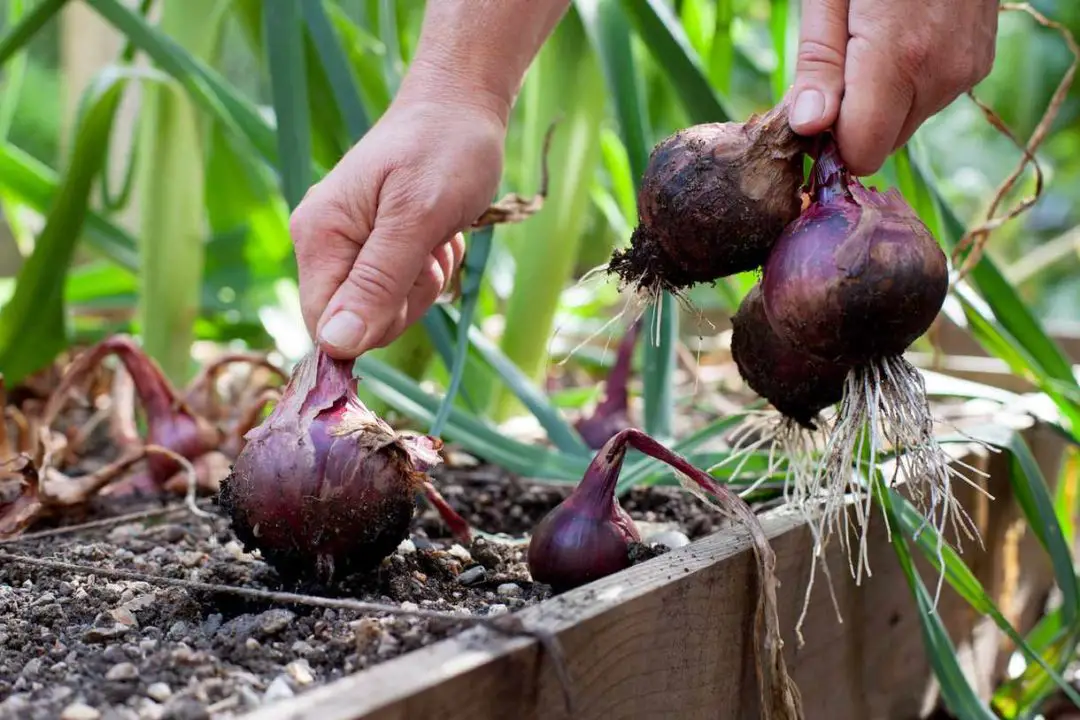When to Plant Onions: Understanding the Best Time
Onions are a cool-season crop, which means they thrive in the cooler temperatures of spring and fall. However, with proper planning and care, onions can also be planted in the summer, including in July. But before diving into summer onion planting, it’s essential to understand the ideal season and climate conditions for optimal growth. Onions typically require a period of cold temperatures to trigger bulb formation, which can be a challenge in the hot summer months. In regions with mild winters, onions can be planted in the fall for a spring harvest, while in areas with cold winters, onions are typically planted in early spring. Understanding the best time to plant onions is crucial for a successful harvest, and it’s especially important to consider when asking the question, “can I plant onions in July?”
July Onion Planting: Is It Too Late?
As the summer months approach, many gardeners wonder, “can I plant onions in July?” While onions are typically planted in the early spring or fall, it’s not too late to plant them in July, but it’s essential to understand the pros and cons of summer planting. Onions planted in July will have a shorter growing season, which can result in smaller bulbs. However, with proper care and attention, summer-planted onions can still thrive. One of the main advantages of summer planting is that onions will mature faster, typically within 60 to 90 days, allowing for a quicker harvest. Additionally, summer planting can help avoid pests and diseases that are more prevalent in the spring and fall. To overcome potential challenges, it’s crucial to choose the right onion variety, prepare the soil properly, and provide adequate watering and care. By doing so, gardeners can successfully grow onions in July and enjoy a bountiful harvest.
How to Plant Onions in the Summer
When asking “can I plant onions in July?”, it’s essential to understand the steps involved in planting onions during the summer months. Planting onions in the summer requires careful planning and attention to detail to ensure a successful harvest. Here’s a step-by-step guide on how to plant onions in the summer:
Soil Preparation: Before planting onions, prepare the soil by loosening it to a depth of 12 inches. Add compost or well-rotted manure to improve soil fertility and drainage. Onions prefer a slightly acidic to neutral soil pH, ranging from 6.0 to 7.0.
Onion Selection: Choose the right onion variety for summer planting. Look for varieties that are specifically bred for summer production, such as ‘Redwing’ or ‘Yellow Granex’. These varieties are more resistant to heat and drought, making them ideal for summer planting.
Planting: Plant onion sets or seeds 1 inch deep and 4-6 inches apart in rows that are 12-18 inches apart. Water the soil gently but thoroughly after planting. If planting in a container, use a deep pot with good drainage to accommodate the onion’s deep roots.
Watering: Onions require consistent moisture, especially during the summer months. Water the soil regularly, but avoid overwatering, which can lead to rot and other diseases. Mulch around the plants to retain moisture and suppress weeds.
By following these steps, gardeners can successfully plant onions in the summer and enjoy a bountiful harvest. Remember to plant at the right time, prepare the soil properly, choose the right onion variety, and provide adequate watering and care to overcome the challenges of summer planting.
Choosing the Right Onion Variety for Summer Planting
When asking “can I plant onions in July?”, it’s essential to choose the right onion variety for summer planting. Not all onion varieties are suitable for summer production, and selecting the right one can make a significant difference in the success of your harvest. Here are some popular onion varieties suitable for summer planting:
‘Redwing’ Onions: These onions are specifically bred for summer production and are known for their sweet, mild flavor and crunchy texture. They mature quickly, typically within 60 days, making them ideal for summer planting.
‘Yellow Granex’ Onions: These onions are another popular variety for summer planting, known for their sweet, yellow flesh and mild flavor. They mature slightly slower than ‘Redwing’ onions, typically within 70-80 days.
‘Texas Grano’ Onions: These onions are a popular choice for summer planting in warmer climates, known for their sweet, mild flavor and crunchy texture. They mature quickly, typically within 60-70 days.
When selecting an onion variety for summer planting, consider factors such as growth rate, flavor profile, and disease resistance. Look for varieties that are specifically bred for summer production and are resistant to heat and drought. By choosing the right onion variety, gardeners can ensure a successful harvest and enjoy the fruits of their labor.
Onion Care in the Summer: Tips for Success
When asking “can I plant onions in July?”, it’s essential to understand the importance of proper care during the summer months. Onions require specific conditions to thrive, and neglecting their needs can lead to poor growth, disease, and pest issues. Here are some tips for successful onion care in the summer:
Watering: Onions need consistent moisture, especially during the summer. Water them deeply once or twice a week, depending on weather conditions. Avoid overwatering, which can lead to rot and other diseases.
Heat Management: Onions are sensitive to extreme heat, which can cause them to bolt or become stressed. Provide shade for your onions during the hottest part of the day, or use a row cover to keep them cool.
Pest Control: Summer is a prime time for pests like aphids, thrips, and onion maggots to attack onions. Use organic pest control methods like neem oil or insecticidal soap to keep these pests at bay.
Fertilization: Onions are heavy feeders and require regular fertilization. Use a balanced fertilizer (10-10-10) and follow the manufacturer’s instructions for application rates.
Mulching: Mulching around the onion plants helps retain moisture, suppress weeds, and regulate soil temperature. Use a 2-3 inch layer of organic mulch like straw or wood chips.
By following these tips, gardeners can ensure their onions receive the care they need to thrive during the summer months. Remember to monitor your onions regularly and adjust your care routine as needed to overcome any challenges that may arise.
Common Mistakes to Avoid When Planting Onions in July
When asking “can I plant onions in July?”, it’s essential to be aware of the common mistakes to avoid when planting onions in the summer. By understanding these mistakes, gardeners can take steps to prevent them and ensure a successful harvest. Here are some common mistakes to avoid:
Overwatering: Onions are prone to rot and other diseases when the soil is too moist. Avoid overwatering, especially during the summer months when the soil is already warm and humid.
Underwatering: On the other hand, onions need consistent moisture to grow. Make sure to water them regularly, especially during hot and dry weather.
Inadequate Soil Preparation: Onions require well-draining, fertile soil to grow. Before planting, prepare the soil by adding organic matter like compost or manure, and removing any debris or rocks.
Insufficient Sunlight: Onions need full sun to grow, so choose a location that receives at least 6 hours of direct sunlight per day.
Incorrect Onion Selection: Not all onion varieties are suitable for summer planting. Choose varieties that are specifically bred for summer production, such as ‘Redwing’ or ‘Yellow Granex’.
By avoiding these common mistakes, gardeners can increase their chances of success when planting onions in July. Remember to plan carefully, prepare the soil, and provide the right conditions for your onions to thrive.
Summer Onion Planting in Different Regions
When asking “can I plant onions in July?”, it’s essential to consider the specific challenges and considerations for planting onions in different regions. Climate conditions, weather patterns, and soil types vary significantly across different regions, and understanding these factors is crucial for successful onion growth.
In regions with hot and dry summers, such as the Southwest or California, onions may require more frequent watering and shading to prevent scorching. In contrast, regions with cool and wet summers, such as the Pacific Northwest, may require less watering and more attention to soil drainage.
In areas with short growing seasons, such as the Northeast or Midwest, onions may need to be planted earlier in the summer to allow for sufficient growth before the first frost. In regions with long growing seasons, such as the South or West Coast, onions can be planted later in the summer and still have time to mature.
Soil type is also an important consideration when planting onions in different regions. In regions with heavy clay soils, such as the Midwest or South, onions may require more careful soil preparation to ensure good drainage. In regions with sandy soils, such as the West Coast or Florida, onions may require more frequent watering to prevent drying out.
By understanding the specific challenges and considerations for planting onions in different regions, gardeners can tailor their approach to their local climate and soil conditions, increasing their chances of success when planting onions in July.
Harvesting Onions in the Summer: What to Expect
When asking “can I plant onions in July?”, it’s essential to understand what to expect when harvesting onions in the summer. Onions are ready to harvest when the tops of the plants begin to yellow and fall over. This typically occurs about 3-4 months after planting, depending on the variety and growing conditions.
To harvest onions, carefully dig around the plants with a fork, being careful not to damage the bulbs. Lift the onions out of the soil, and brush off any excess dirt. It’s essential to harvest onions at the right time, as leaving them in the ground too long can cause them to rot or become vulnerable to pests.
After harvesting, onions should be dried in a warm, dry place to remove any excess moisture. This can be done by spreading the onions out in a single layer on a tray or paper bags, and allowing them to air dry for several days. Once dry, onions can be stored in a cool, dark place for up to 6 months.
Some summer onion varieties, such as ‘Redwing’ or ‘Yellow Granex’, are bred specifically for their sweet, mild flavor and crunchy texture. These onions are perfect for using fresh in salads, sandwiches, or as a topping for grilled meats. Other varieties, such as ‘Texas Grano’ or ‘Vidalia’, are better suited for cooking and roasting, and can add a depth of flavor to soups, stews, and roasted vegetables.
By understanding what to expect when harvesting onions in the summer, gardeners can enjoy a bountiful crop of delicious, homegrown onions, and make the most of their summer onion planting experience.







:max_bytes(150000):strip_icc()/GettyImages-518210398-119be9f99a6d41ea9cfd26b7888ea772.jpg)